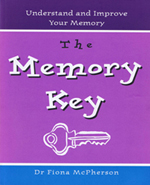What are external memory aids?
External memory aids include such strategies as:
- taking notes
- making shopping lists
- entering appointments in a diary or on a calendar
- writing a memo to yourself
- writing on the back of your hand
- taking photographs
- using clocks, oven timers, alarms on watches, etc
- putting objects in a conspicuous place
- putting a knot in your handkerchief
- asking someone to help you remember
Making lists
Making lists or writing reminder notes to yourself, is one of the most widespread external memory aids. It seems that list-making is primarily helpful as a way of organizing (encoding) information, rather than its more obvious role in retrieving. More often than not, people do not actually use the list or note to ‘remember’. The act of making it is sufficient to aid later recall.
However, there are situations where list-making appears appropriate but is not in fact the best strategy. For example, one study found that waitresses who went from table to table to take drink orders were much better at remembering the orders if they visualized the drinks in particular locations rather than when they wrote the orders down1. It is perhaps the time pressure in that kind of situation that makes an internal strategy more effective than an external one.
When to use mental strategies
- when you can’t rely on external prompts (e.g., acting in a play)
- when external prompts are difficult to prepare (e.g., because you lack writing materials) or hard to use (you have OOS in your writing hand)
- when you didn’t expect to need to recall something, and have nothing prepared
- when using external aids interferes with other behavior (understanding what’s going on; taking orders; etc)
- when carrying external aids would be undesirable or inconvenient (e.g., when driving)
- when the interval between learning and recall is very short (as when you need to remember a phone number only long enough to dial it)
When to use external memory aids
- when a number of interfering activities occur between encoding and recall (e.g., having to remember to buy groceries after work)
- when there is a long time between encoding and recall (e.g., needing to make a doctor’s appointment two months in the future)
- when internal aids are not trusted to be sufficiently reliable (as when precise details need to be remembered; or strict timing — when to check a cake in the oven)
- when information is difficult, and doesn’t cohere easily (e.g., remembering lectures)
- when there is insufficient time to properly encode information
- when memory load is to be avoided (as when you are attending to more than one activity)
How effective are external memory aids?
In general, external aids are regarded as easier to use, more accurate, and more dependable, than mental strategies. However, with the exception of note-taking, there has been little research into the effectiveness of external memory aids. The most that can be said is that, by and large, people believe they can be effective (with the emphasis, perhaps, on ‘can’).
One problem with external aids is that most of them are highly specific in their use. Their effective use also requires good habits. It’s no good remembering to make a note in your diary if you don’t remember to look in it.
- Intons-Peterson, M.J. & Fourrier, J. 1986. External and internal memory aids: when and how often do we use them? Journal of Experimental Psychology: General, 115, 267-280.
- Intons-Peterson, M.J. & Newsome, G.L. III. 1992. External memory aids: effects and effectiveness. In D. Herrmann, H. Weingartner, A. Searleman & C. McEvoy (eds.) Memory Improvement: Implications for Memory Theory. New York: Springer-Verlag.
- Bennett, H.L. 1983. Remembering drinks orders: The memory skills of cocktail waitresses. Human Learning, 2, 157-169.
